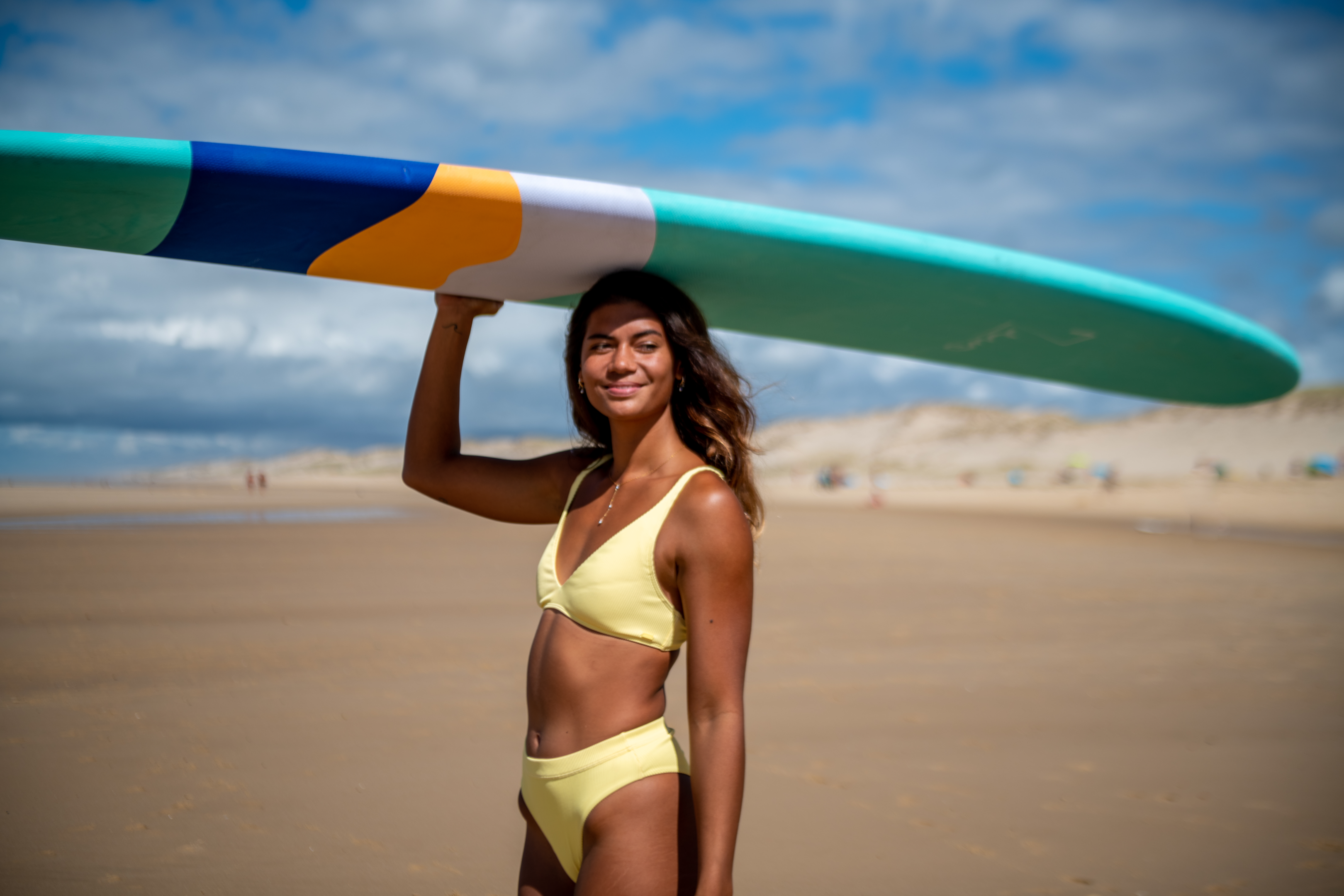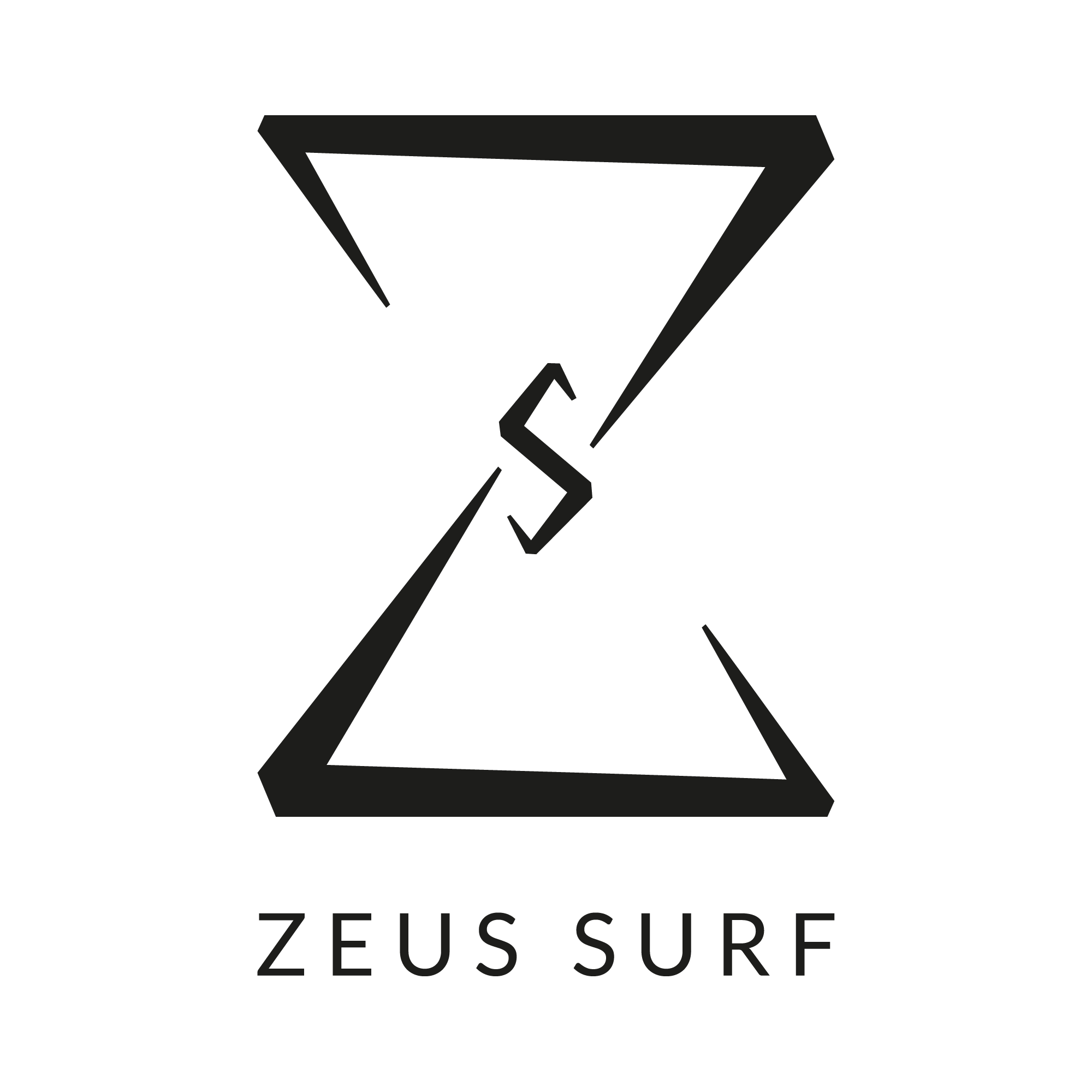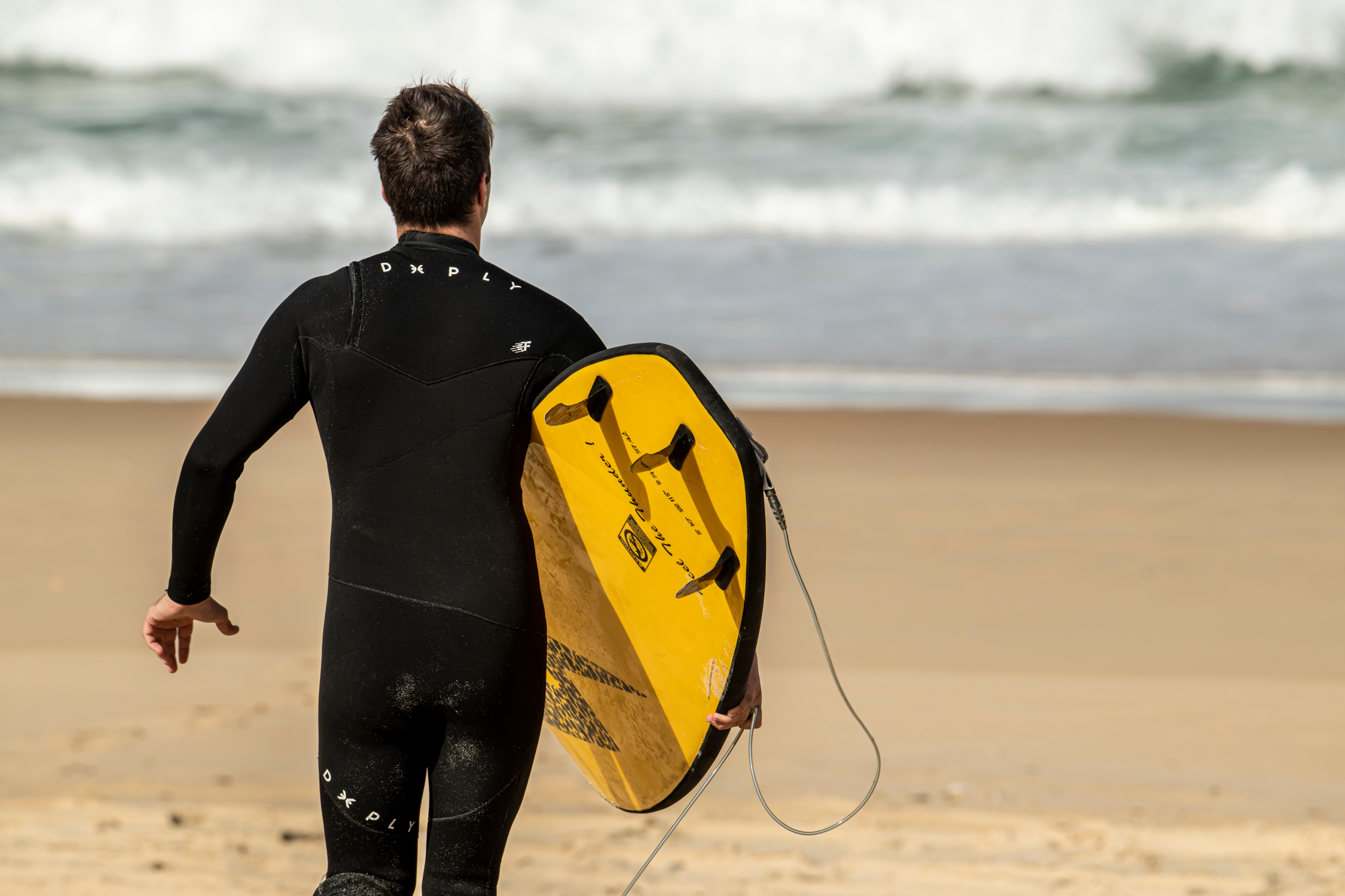Welcome to the jungle of the surfing world! It's not easy to find your way around when you're looking for a beginner surfboard. Mini malibu, Egg, Longboard, fish or Gun. Which surfboard to choose?
So if you dream of taming the waves and launching into the exhilarating world of surfing ? To succeed in this aquatic adventure, choosing your first surfboard is an essential step. But with so many board shapes and sizes, it can quickly become a challenge for beginner surfers . Don't worry, we're here to help!
At Zeus, our philosophy is to offer you surfing equipment adapted to your level and your practice.
In this article, we will guide you in choosing the surfboard that best suits your surfing level , goals , and local surf conditions . We will introduce you to the different shapes of boards , from the stability of longboards , to funboards , including mini-malibus for gentle learning. With this information you will be one step ahead during your next visit to the store.
In addition, if you need help choosing your board, our team of passionate experts is here to support you: you will benefit from professional advice when choosing your beginner surfboard .
You can contact us via the online chat on our website and get personalized advice on finding the perfect surfboard. So get ready to catch your first wave and experience unforgettable sensations on the waves. The surf adventure starts here!
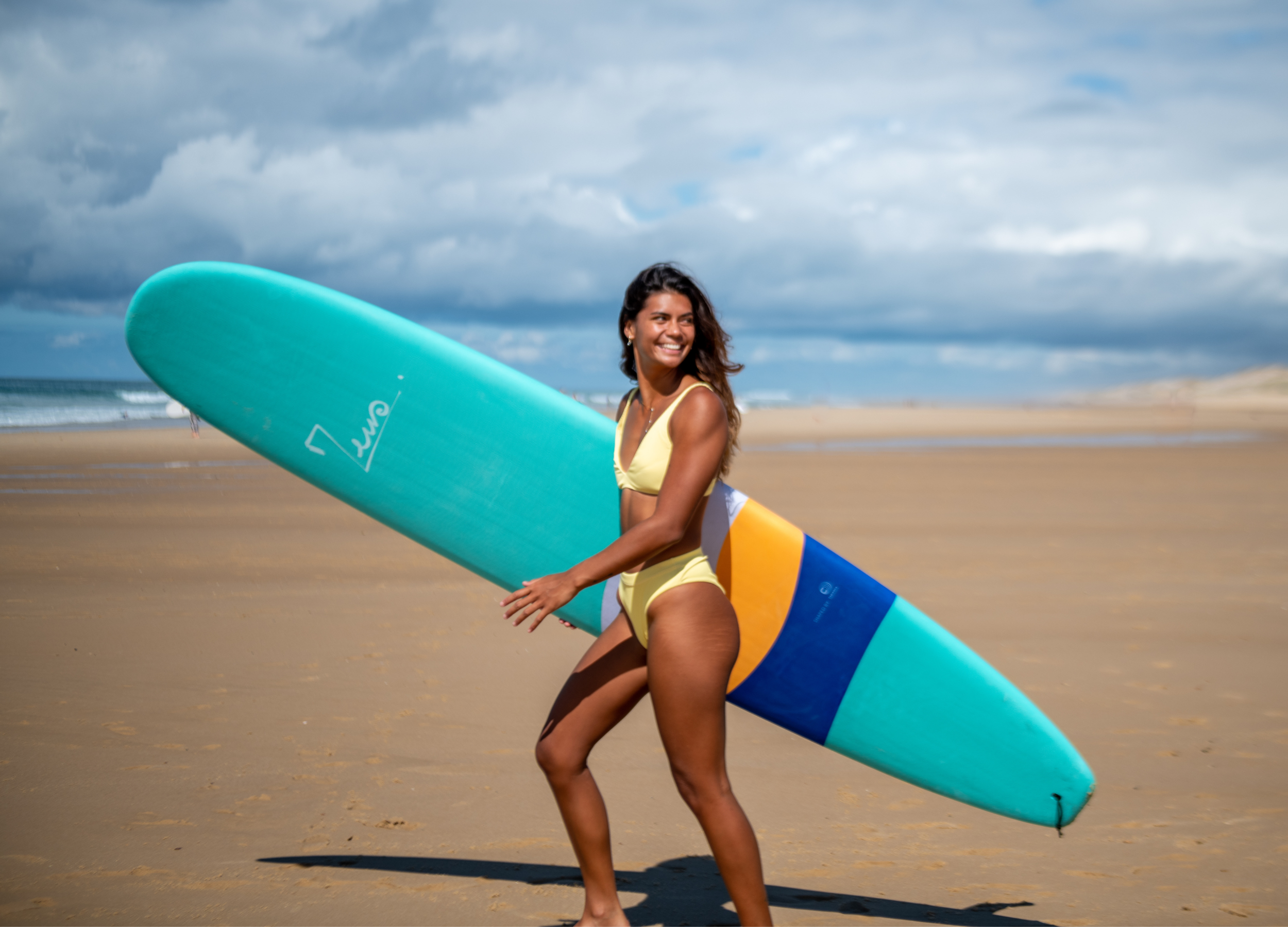
I. Choosing a surfboard adapted to your level
To choose your first surfboard , it is important to know your level in order to select the board best suited to your practice and your discipline.
Beginner surfer:
You are a beginner surfer if you have never surfed or only a few times. Generally you have just done your first surfing course in a surf school or in a surfcamp.
In this case you will need a surfboard that is both stable and easy to maneuver. It is this first board that will allow you to learn the basics of surfing in complete safety and get started.
Choose a board with good buoyancy and generous volume to facilitate your learning to paddle and catch waves (Take off). Foam surfboards are particularly recommended for novices due to their high buoyancy , stability and error tolerance. These are boards that are easy to handle and allow you to slide without too much effort.
In addition to that, they are also safer and they are also affordable surfboards that are easy to find on the second-hand market. With these boards you will discover the sensations of gliding.
This article is perfect to help you choose your first surfboard.
Intermediate surfer:
We also have a complete guide to choosing a surfboard for more advanced levels
You are an intermediate surfer if you have gained some surfing experience and are able to paddle, catch waves, and perform basic turns.
The goal ? Improve your technical skills and feel more comfortable in the water.
An intermediate surfer can begin to explore different board shapes, depending on their preferences and surfing style. The size and volume of the board can be adjusted according to your progress and personal goals. At this point, you can try more complex maneuvers .
Confirmed surfer:
You are an experienced surfer if you have solid surfing experience and if you master different surfing techniques, maneuvers and styles. You are able to surf different types of waves and adapt to changing conditions. You probably have preferences when it comes to board shape and performance . They can choose boards that suit their specific style of surfing, whether it's shortboards for radical performance, fish for smaller waves, or mini-malibus for soft waves.
To help you make your choice and find the ideal board easily, all our boards are classified by level .
The advice in this article is intended for beginner surfers who want to buy their first surfboard to progress.
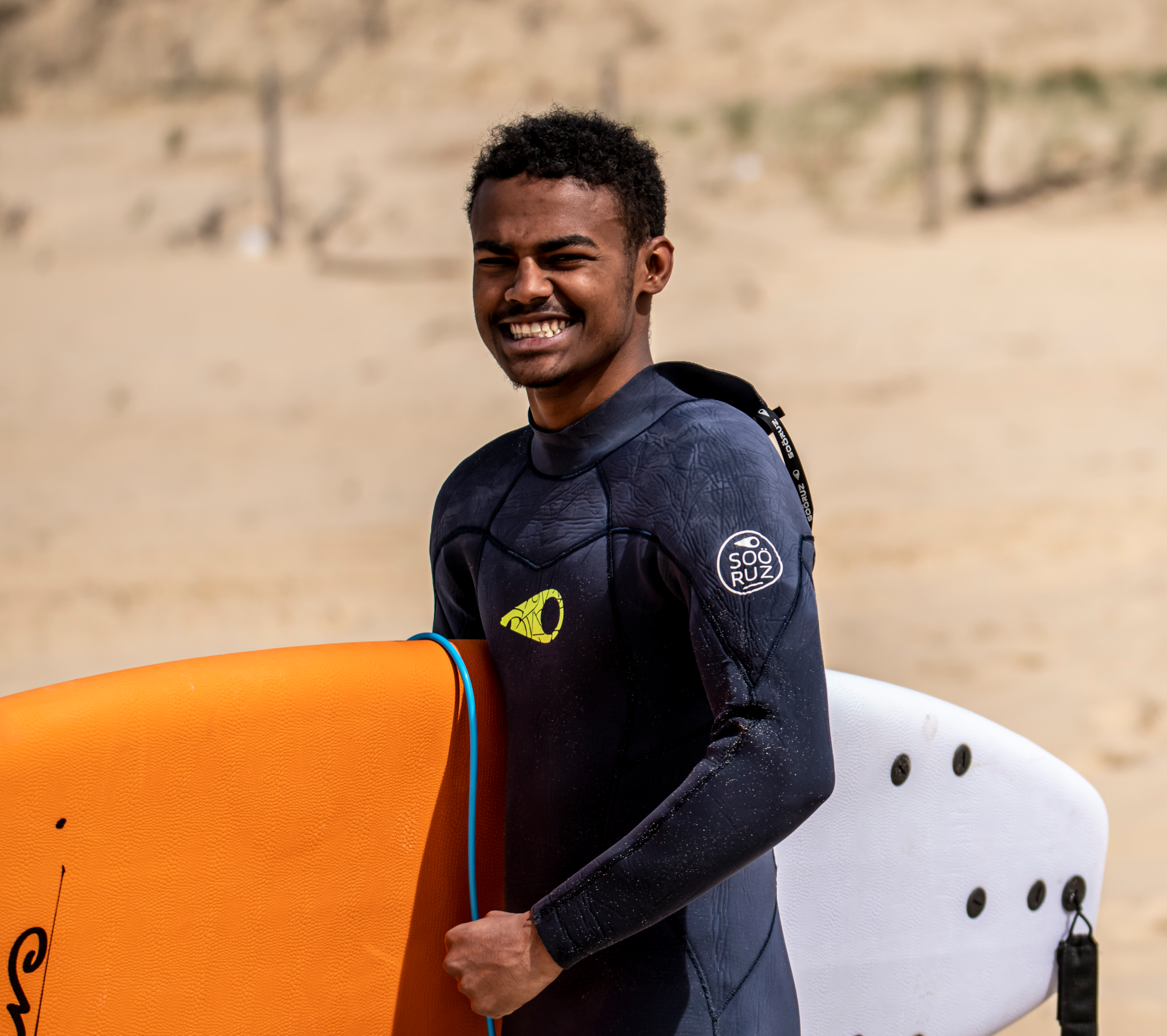
II. How to choose between a foam board and a composite board?
When looking to buy a surfboard, one of the decisions to make is whether to choose between a foam board and a composite board . These two types of boards have different characteristics that influence their performance, durability and adaptability to different surfing levels.
Here's an overview of what a foam board and composite board are, along with some tips to help you choose which one is best for you.
What is a foam board?
Foam surfboards , as the name suggests, are made from polyurethane or polystyrene foam. They are then covered with a soft foam cover called "soft-top", making them ideal for beginners and for surfers looking for a safer surfing experience. Foam boards are often wider and thicker than traditional resin boards, making them stable and easy to maneuver. They are also lighter, making transport and handling easier.
Foam boards are valued for their durability and ability to absorb shock, making them less prone to cracking and damage when colliding with other surfers or the board itself. Due to their durable design, they generally require less maintenance and can last longer than resin boards.
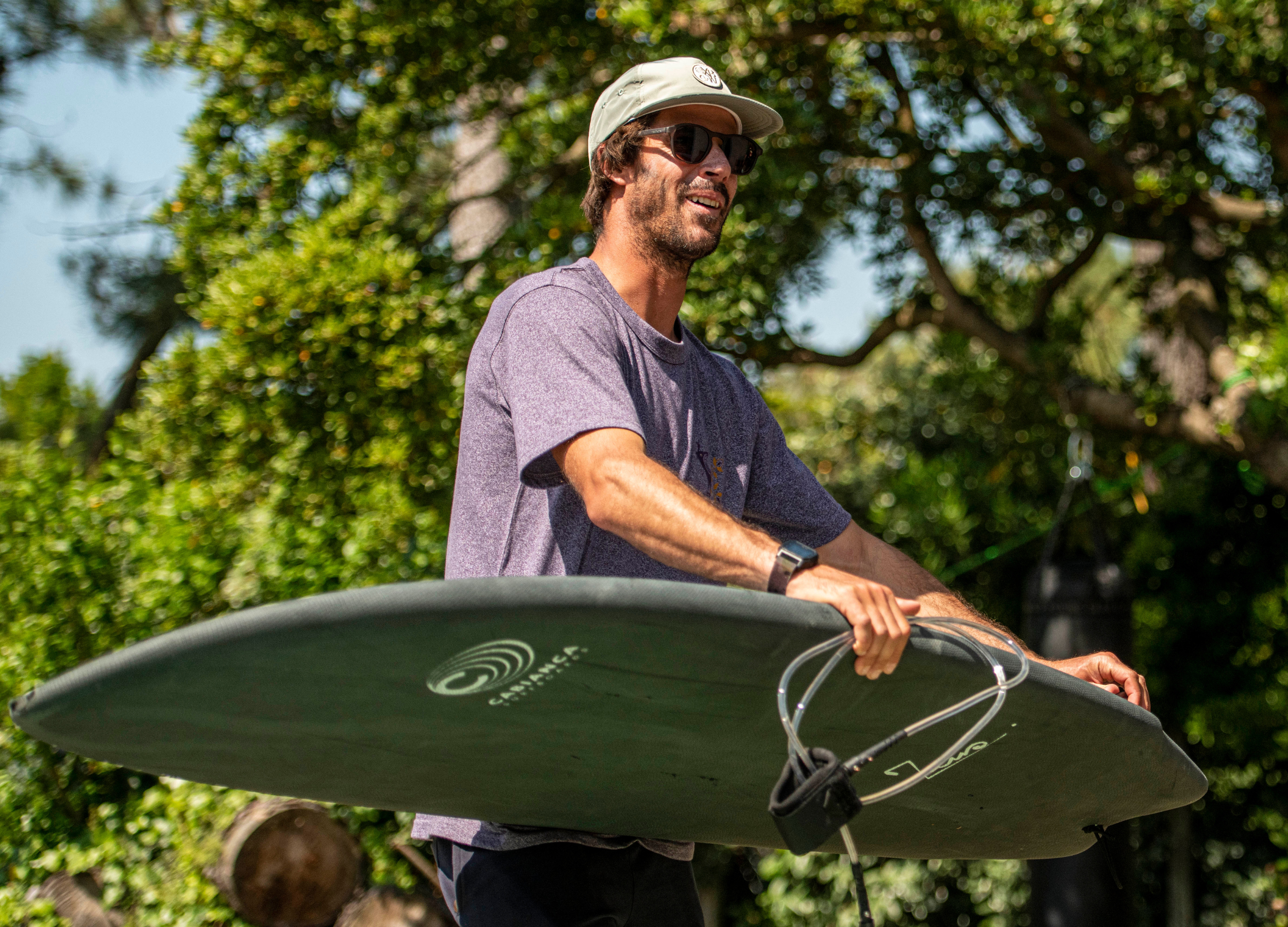
What is a composite board?
Composite surfboards are typically made from polyurethane or polystyrene foam, but are then coated with fiberglass and epoxy resin, giving them a hard, strong finish. Composite boards are closer to traditional boards used by advanced surfers, and they offer a more responsive and dynamic performance in waves.
Composite boards are valued for their flexibility and ability to generate speed on waves. They are often thinner than foam boards, making them ideal for performing more radical maneuvers and tighter turns. Composite boards are used by many experienced surfers who are looking for a more technical and high-performance feel in the water.
How to choose between a foam board and a composite board?
Choosing between a foam board and a composite board depends on several factors, including your surfing level, your goals as a surfer, local surf conditions, and personal preferences.
If you are a beginner and looking for a board to learn surfing safely, we advise you to choose a foam board. It offers increased stability and better buoyancy which will allow you to progress with complete confidence. In the event of an impact during the surf session, they are also less harsh and reduce the risk of injury. If you have just started surfing in a school, you have probably used a foam surfboard and you will find your bearings more easily by choosing a foam board for your first purchase.
If you have a little more experience and are looking to improve your skills and explore more advanced maneuvers, you may want to consider a composite board. It offers a more dynamic and responsive performance on waves, allowing advanced surfers to push their limits.
Foam boards are ideal for beginners and those looking for a safer surfing experience, while composite boards are preferred by experienced surfers looking for more technical and advanced performance. At Zeus we offer you a wide selection foam surfboards , perfect for beginners.
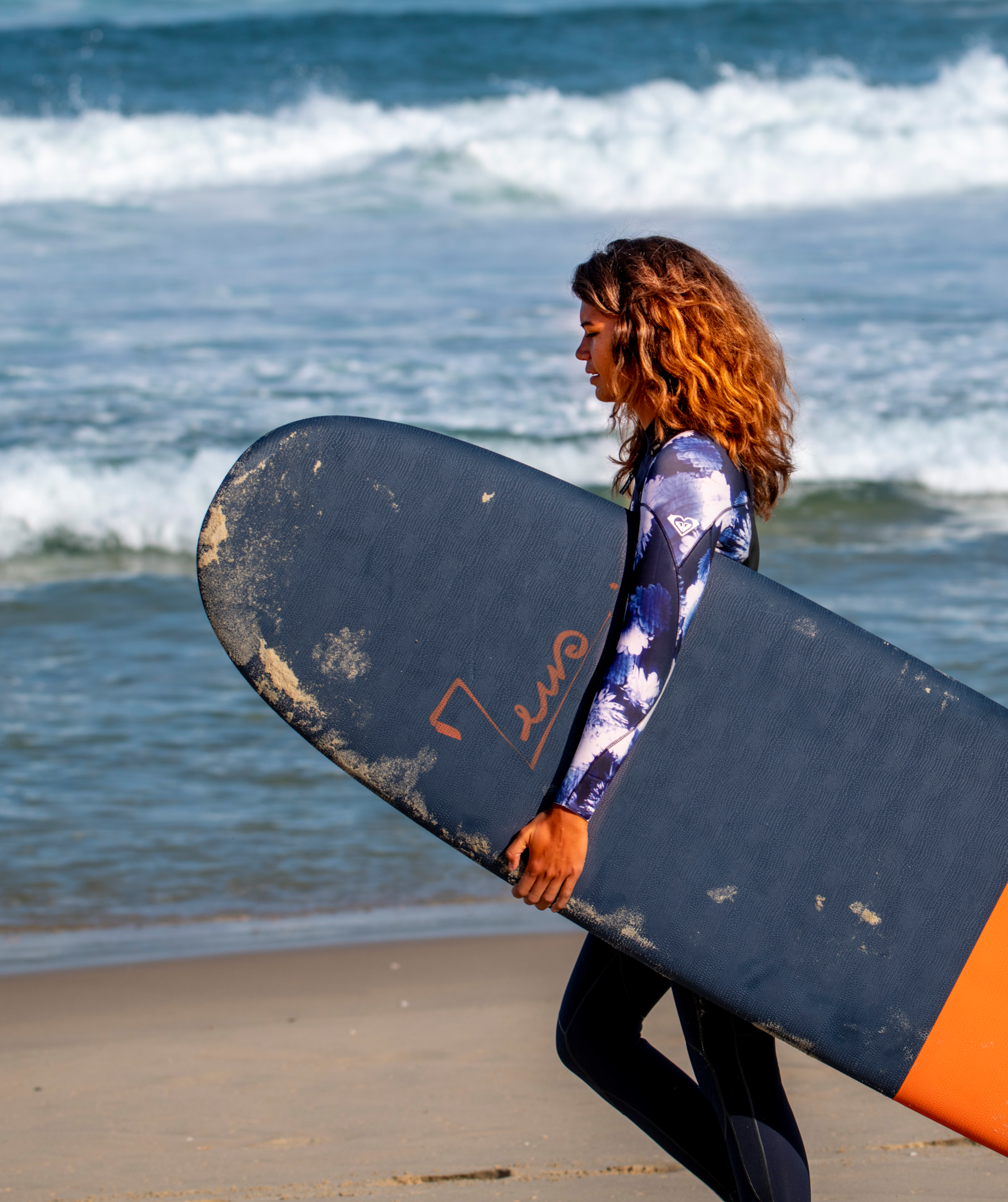
To help you choose
Foam Surfboard:
Advantages :
-
High Stability: Foam boards are known for their high stability, making them a great choice for beginners looking to learn to surf with confidence.
-
Error Tolerance: Beginners can make technical errors without worrying as much about the consequences, because foam boards absorb impacts more easily than composite boards.
-
Safety: Due to their soft design and ability to absorb shock, foam boards reduce the risk of injury, making them an ideal choice for learning.
The inconvenients :
-
Limited in terms of performance: Foam boards have limited performance compared to composite boards. They are not designed for radical maneuvers or shallower waves.
-
Relative durability: Although more durable than resin boards, foam boards can wear out more quickly with heavy use.
-
- Limits of progression: Once the surfer has acquired advanced skills, he may feel that foam boards no longer meet his performance needs.
Composite Surfboard:
Advantages :
-
Advanced Performance: Composite boards offer better responsiveness and dynamics in the water, making them ideal for experienced surfers who want to push their limits.
-
Technical maneuvers and precision: With their slimmer design and ability to generate speed, composite boards allow surfers to execute more technical maneuvers and tighter turns.
-
Increased Durability: Composite materials, such as fiberglass and epoxy resin, give these boards better durability compared to foam boards.
The inconvenients :
-
Harder to learn: Due to their higher performance, composite boards can be more difficult for beginners to master, which can lead to frustration.
-
Less tolerance for errors: Technical errors can have more pronounced consequences on composite boards, which can make learning more abrupt.
-
Less suitable for beginners: Due to their slimmer design and increased performance, composite boards may not be the best option for beginner surfers looking for a more stable and secure experience.
👉 To go further : Understand the construction of Zeus foam boards
👉 Discover our Classic foam surfboard range
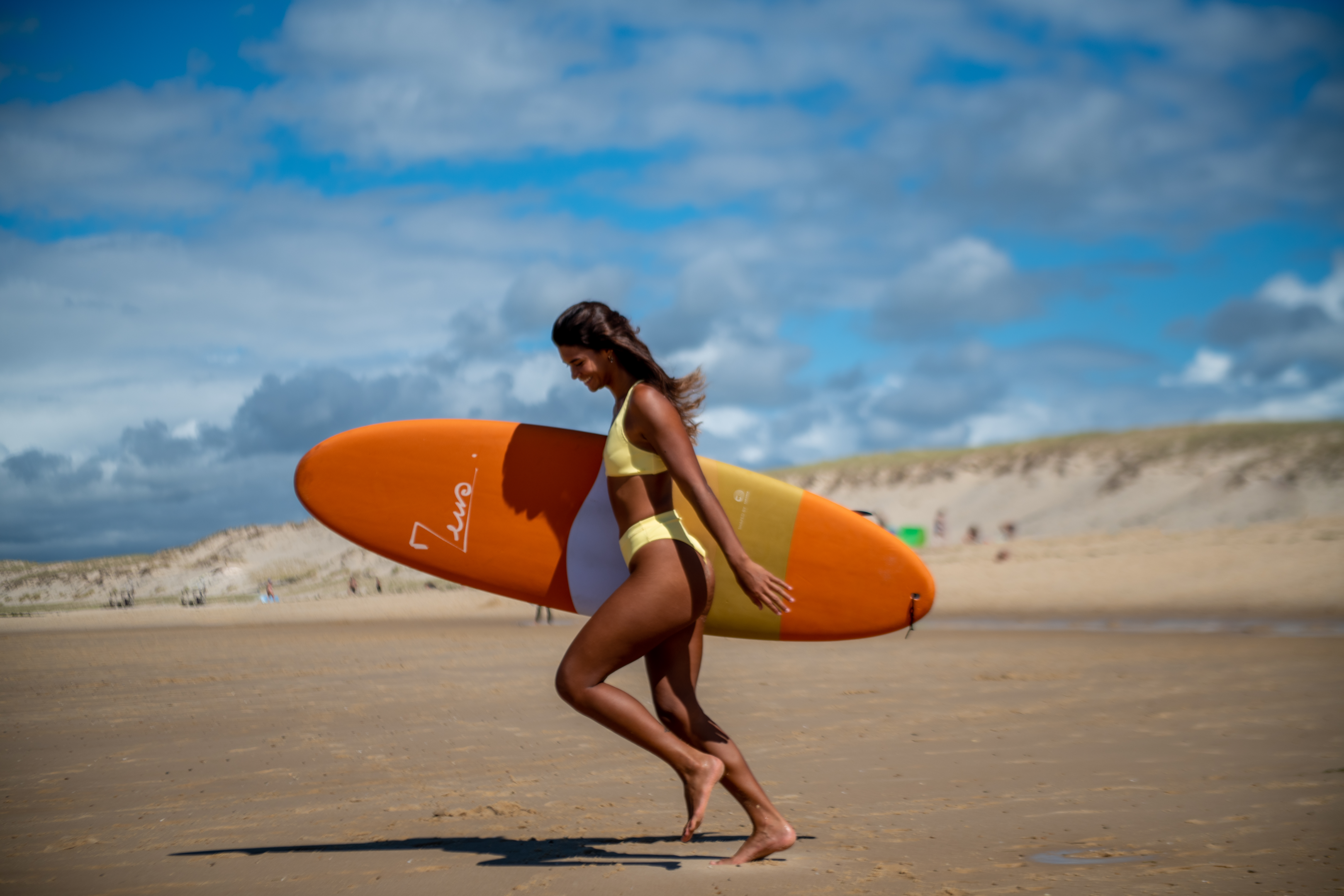
III. Choosing the right size and volume of board
The size of the board will largely determine your ease of paddling, your stability on the water and your ability to catch waves. The larger and more volume a board has, the more stable it is.
Take your level into account
-
Your surfing level is a key factor in determining which board size is best for you.
-
If you are a beginner and surfing for the first time, opt for a wider and thicker board, as this will give you better stability when paddling and catching waves. A board with more volume will help you stand up more easily and gain confidence in the water.
-
The most common mistake is wanting to surf a board that is too small: it is better to choose a board that is too big than too short.
-
On the other hand, if you already have some knowledge of surfing and want to progress, you can choose a slightly shorter and narrower board, which will allow you to improve your maneuverability and turns.
Our favorite board for novices:
Consider your weight and height
Your weight and height are important things to consider when choosing the size and volume of the board. If you are heavier and taller, you will need a board with more volume to support you in the water. A wider, thicker board will give you the necessary buoyancy to allow you to catch waves more easily.
On the other hand, if you are lighter and smaller, you can opt for a board with a little less volume, which will give you better maneuverability and a more dynamic surfing experience.
Be careful, however, not to go too small when you're starting out: you can choose a board of at least 7'.
A tip for choosing the right volume for a beginner:
It is best to start with a board whose volume corresponds to the surfer's weight. For example, an 80 kg surfer can choose a 75L board.
Consider local surf conditions
Local surf conditions can also play a role in choosing the size of your first board.
Depending on the type of waves at the spot , you can choose a board with more or less volume.
If the waves are very hollow and powerful then in this case you can take a board with a little less volume , and conversely if you are on soft waves it will be better to have more volume to take better advantage of these conditions .
For example, if you surf in Brittany near La Torche or in Oléron you can take a larger board, the same for the Côte des Basques.
If you have hollow waves like in Mimizan, La Cote Sauvage, or Hossegor you can then take a board with a little less volume, provided you perfectly master the take off.
Please note: the size and weight of the surfer must always be taken into consideration first before making adjustments to the spot
Some examples of our favorite boards for beginners:
The perfect board for a 75kg novice surfer in Mimizan
The perfect board for a beginner surfer mastering the take off in Oléron:

IV. Which shape should you choose for your first surfboard?
The shape of the board is one of the most important aspects to consider when making your choice. The shape will largely determine how easy you are to learn to surf, your stability on the water and your progress as a beginner surfer.
What is the shape of a surfboard?
The shape of a surfboard refers to the shape and overall design of the board. It is one of the most fundamental aspects that determines the performance, behavior and characteristics of the board in the water.
Here are some tips to help you choose the ideal shape for your first surfboard.
Longboards: maximum stability for beginners
Longboards are a very good option for beginner surfers. These boards are very stable, making them perfect for learning the basics of surfing. They offer good buoyancy to make paddling easier and catch waves more easily. Their shape makes them stable, making it easier to stand up and gain confidence in the water.

Funboards: compromise between stability and maneuverability
Funboards are another great option for beginner surfers. They are larger than shortboards, but shorter than longboards, thus offering a compromise between stability and maneuverability. Funboards have a wider, thicker shape, making them stable and easy to paddle. They allow you to progress in your technique while giving you the opportunity to take shallower waves and try some maneuvers.
Mini-malibus: a gentle start
Mini-malibus are a variation of longboards, but smaller in size. They offer excellent buoyancy and stability, making them perfect for beginner surfers looking to start gently. Their wide and thick shape makes it easier to catch waves and offers smooth gliding. Mini-malibus are ideal for beginners who want to learn surfing in a gradual and comfortable way.
V. Which tail to choose for your first beginner surfboard
What is the tail of a surfboard?
The tail of a surfboard refers to the rear part of the board, the one opposite the front part or "nose". The shape and design of the tail plays a crucial role in the overall performance of the board when moving through the water. Different tail shapes offer distinct characteristics that influence how the board performs in waves, including aspects such as speed, maneuverability, control and stability . The tail can be designed in a variety of ways, with each shape having its advantages and disadvantages, allowing surfers to choose a tail suited to the wave conditions and their surfing style.
Let's explore the different surfboard tail shapes and how they can enhance or hinder your surfing experience.
What are the different types of tails for a surfboard?
-
Squash Tail: The squash tail has a square shape. It is one of the most versatile shapes, offering a good balance between control and maneuverability. It is suitable for a variety of wave conditions and suitable for surfers of different skill levels.
-
Pin Tail: The pin tail has a tapered shape and is often narrower at the tip. It provides better grip in larger, more powerful waves, making it a popular choice for experienced surfers and for larger waves.
-
Swallow Tail: The swallow tail has a forked tail shape with outer edges angled outward. It offers a combination of speed and control, making it a good choice for medium-sized waves. It is often used on fish type boards.
-
Round Tail: The round tail has a rounded end. This shape improves stability and control, making it a good choice for slower waves and wider turns.
-
Square Tail: The square tail has a square tail shape, similar to the squash tail, but with sharper corners. It offers good buoyancy and is suitable for small waves, offering a good compromise between stability and maneuverability.
-
Round Pin Tail: The round pin tail combines the characteristics of the round tail and the pin tail. It provides improved grip in larger waves while maintaining some maneuverability.
-
Diamond Tail: The diamond tail has a diamond shape. It offers good grip and control, suitable for hollower waves, but may be less maneuverable in smaller waves.
-
Bat Tail: The bat tail has a shape similar to the letter "W", with wider outer corners. It offers a combination of control and maneuverability, suitable for medium to large sized waves.
What tail shape for a beginner surfboard?
For a beginner, the squash tail is generally the most suitable. Its combination of control and stability makes it a great choice for learning the basics of surfing with confidence. The square shape of the squash tail provides better hold in the water and facilitates smoother turns, which is essential for beginners. However, it is important to note that the best tail shape can also depend on the type of board used and the specific wave conditions.
VI. How to configure the fins on your first board
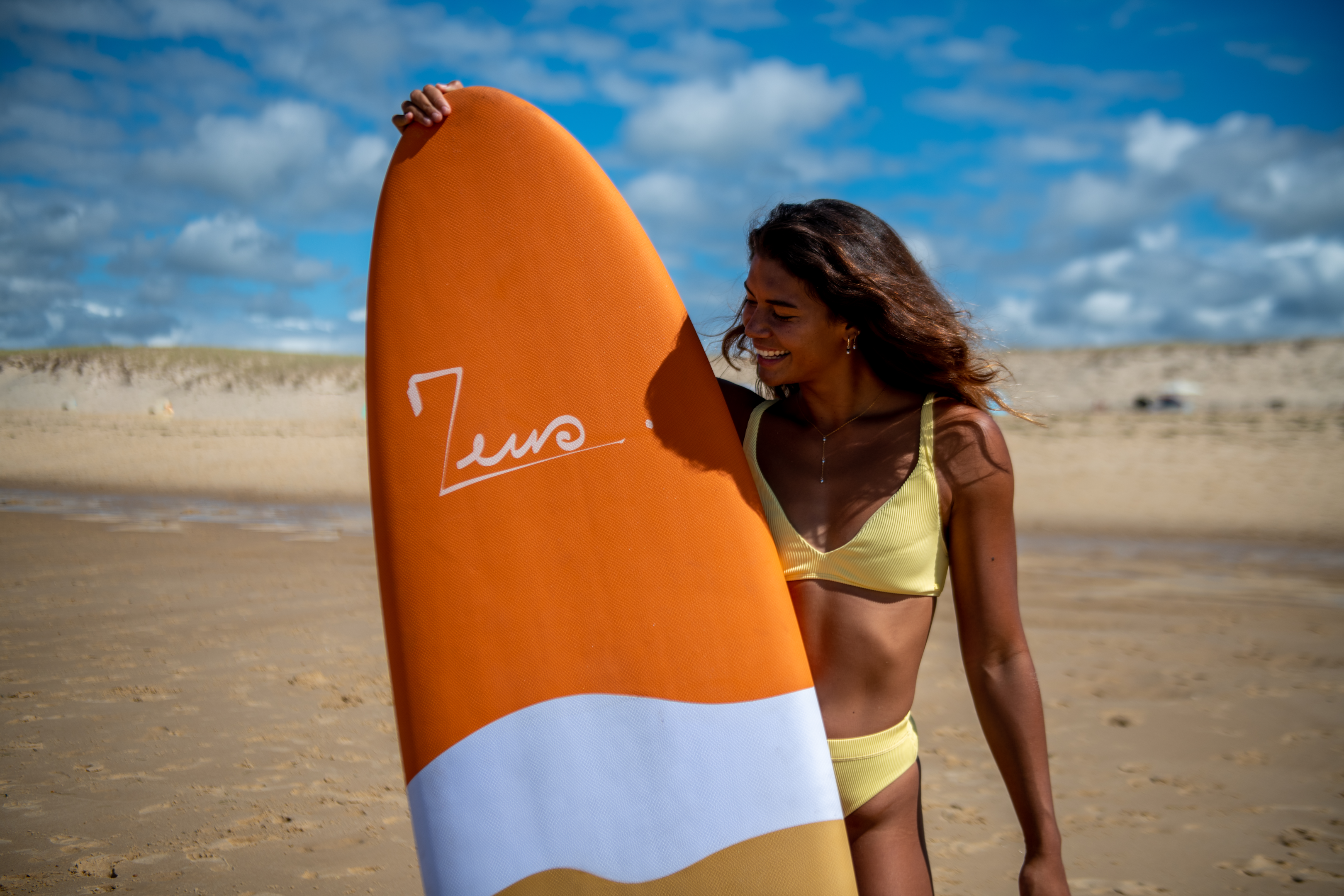
What is a fin?
The fin of a surfboard (also called fin) is an essential part attached to the lower part of the board, under the rear part, near the tail. It plays a crucial role in the stability, steering and maneuverability of the board as it glides through the water. Fins allow the surfer to control the trajectory of the board, maintain balance and make turns based on body movements and water movements.
If you are a beginner surfer, there is no need to stress about fin configuration . Beginner boards are already configured to make it easier to learn to surf and enjoy a pleasant riding experience.
VII. Call on experts to help you make your choice
Choosing the perfect surfboard can be a challenge, especially if you are a beginner or exploring new horizons as a surfer. Fortunately, you don't have to make this choice alone! At Zeus, we are here to support you in your search and help you find the ideal board that matches your surfing level, your goals and your preferences.
Our team of surfing experts are passionate and have in-depth knowledge of different types of boards, their characteristics and their performance in different conditions. If you're looking for a foam board to get started safely, we're here to guide you every step of the way.
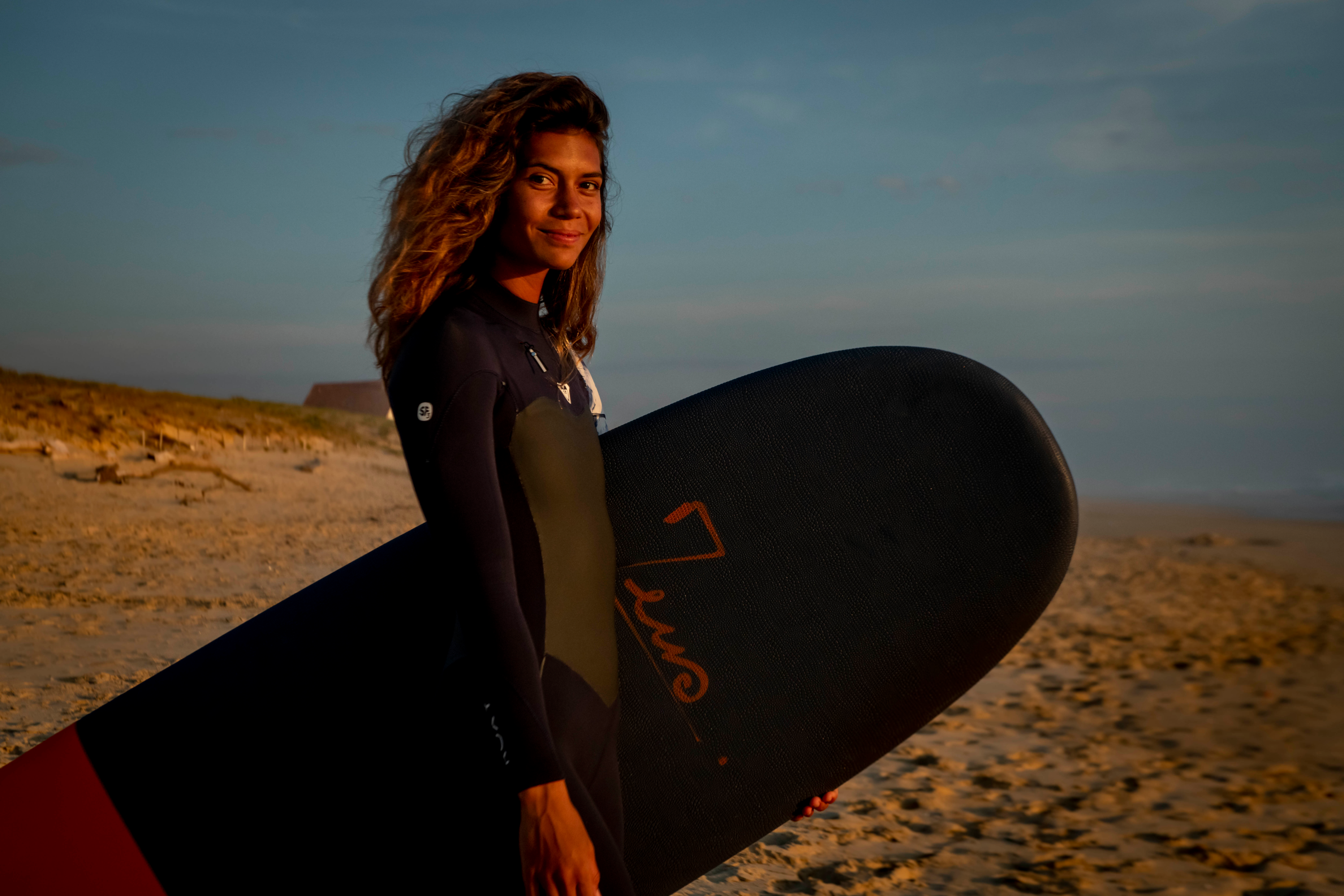
How can we help you ? It's simple ! On our website you will find online chat available on the home page. Simply click on the chat icon to start a live conversation with one of our experts. Ask your questions, share your preferences and needs, and our team will be happy to provide personalized advice to help you make an informed decision.
Our team is available to answer all your questions, dispel your doubts and guide you towards the board that best meets your expectations.
We look forward to helping you find the board that will allow you to fully enjoy the pleasures of surfing and experience unforgettable sensations on the waves. The surf adventure begins with Zeus!

Conclusion :
Choosing your surfboard is a crucial decision that will shape your experience in the waves . Every aspect of the board, from its size to its shape to its volume , plays a vital role in your progress as a surfer. Beginners are fortunate to be able to count on the reassuring characteristics of foam boards , offering stability , buoyancy and tolerance for errors . These are ideal for learning the basics and gaining confidence .
Zeus' team of experts is here to guide you on this journey . Our online chat is the ideal tool for getting personalized advice and answers to all your questions. We understand that every surfer is unique , with specific goals and needs. Thanks to our expertise , we can help you find the ideal board .
So, whether you 're just starting out or looking to take your surfing to the next level , remember that choosing a board is an exciting step in your journey. The waves are calling you, and the Zeus team is here to equip you with precision , passion and unparalleled knowledge . Get ready to tame the waves in style !
We are excited to be part of your journey on the waves . Make the most of every moment on the water, explore your abilities and create unforgettable memories . 🏄♀️🏄♂️💦
👉 Click here to chat with one of our experts and find the perfect surfboard for you. The chat is at the bottom right of each page of our site 💬
Zeus
Take your first wave with us!
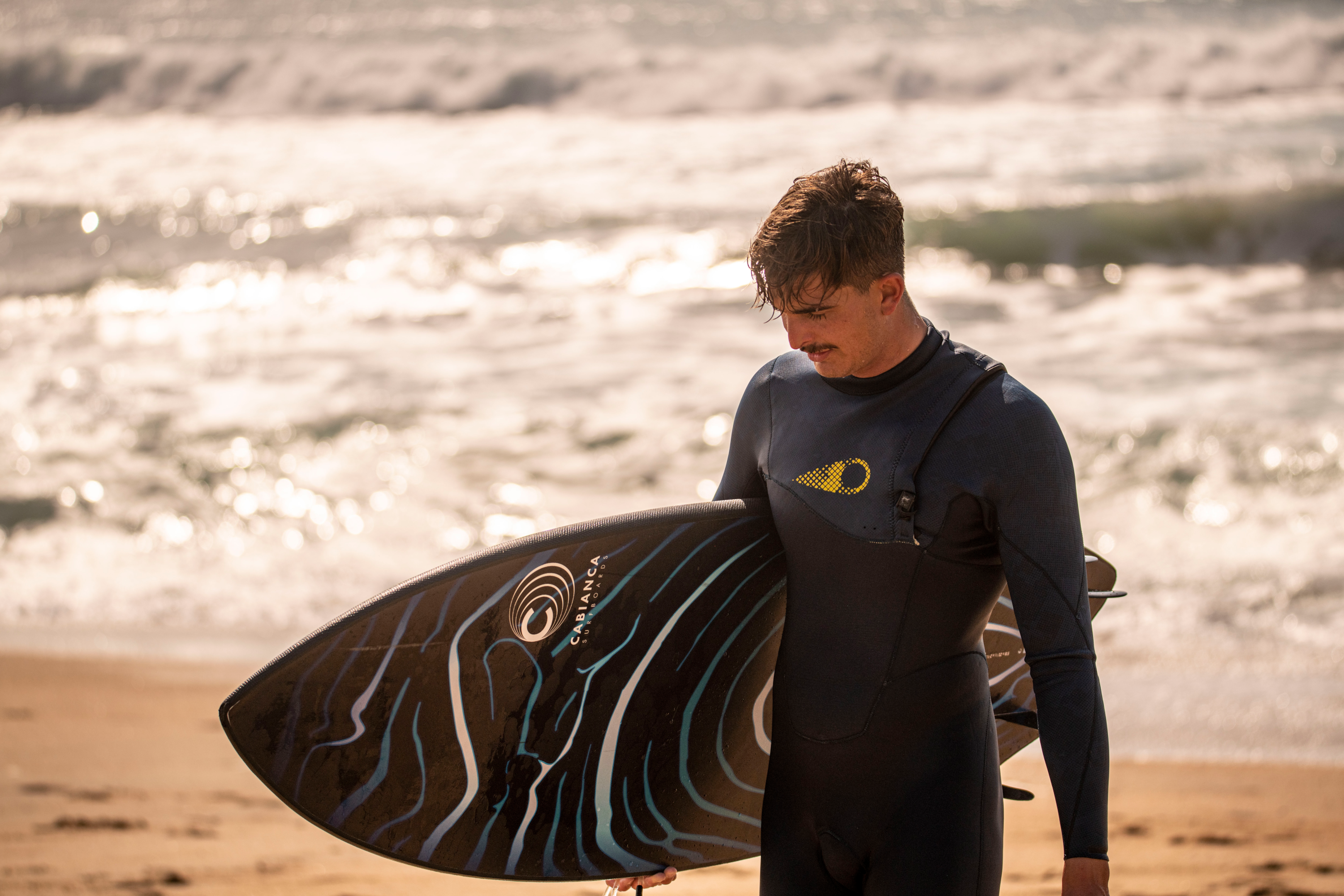
FAQ - How to choose the right surfboard?
Q: What makes foam boards different from composite boards?
A: Foam boards are ideal for beginners and provide a safer and more secure surfing experience. Composite boards are preferred by experienced surfers looking for more advanced performance on the waves.
Q: What size board should I choose?
A: The size of the board depends on your surfing level. For beginners, opt for a wider, thicker board for better stability. For those looking to progress, a slightly shorter and narrower board is recommended.
Q: How to choose the board according to my weight and height?
A: If you are heavier and taller, opt for a board with more volume for better buoyancy. If you are lighter and smaller, you can opt for a board with less volume for better maneuverability.
Q: Which shape should I choose for my first surfboard?
A: For beginners, we recommend longboards for their stability. Funboards offer a compromise between stability and maneuverability, while mini-malibus are perfect for a gentle start.
Q: How do I configure the fins on my first board?
A: Beginner boards are already set up to make learning to surf easier. No need to stress about their configuration.
Q: How can I get help choosing my surfboard?
A: Our team of experts is available via online chat on our website. They will help you find the ideal board based on your level, your goals and your preferences.
Q: What is the best way to enjoy the surfing experience?
A: By choosing the right board, adapting the fins and finding the shape that suits you, you will be able to fully enjoy your surfing experience. It's also important to take surf lessons from a qualified instructor to learn the basics and improve your technique. Find out about the surf conditions before heading to the beach and make sure you follow the safety rules at sea. Enjoy every surf session and have fun!
